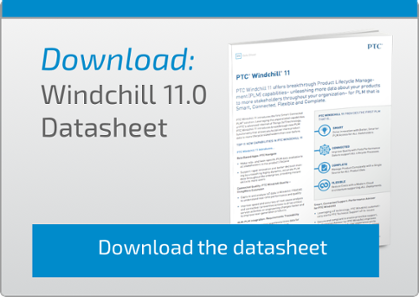
If CAD data management is absent from a manufacturing business, the ability to reuse designs, ensure everyone has unrestricted access to detailed product information and retain control over design versions becomes incredibly challenging.
With even the most basic forms of CAD data management in place, manufacturers can raise productivity levels and enable departments and colleagues to collaborate more closely.
Every product is built from individual parts, many of which often have their own release processes and manufacturing techniques. Retaining this data in multiple systems, spreadsheets and documents scattered across the company network may lead to lost data or production hold-ups.
The answer to this conundrum lies in CAD data management and we’ve got the straightforward guide to this essential element of modern product development.
What is CAD data management?
CAD data management helps engineers and designers to organise design data, manage the related documentation and track product revisions, all from one place.
Because the assemblies of products are made up of many constituent parts, multiple design files (often from different CAD systems) are usually required to illustrate each part and, as a result, need to be combined so that teams can manage the entire product lifecycle.
A good CAD data management system is capable of managing product data from different CAD systems and, in turn, ensuring data integrity and promoting concurrent engineering.
What are the benefits of CAD data management?
#1 One system for all engineering data
Multiple CAD systems are hard to administer and often present time-sapping problems whenever designs need to be corroborated. With CAD data management, disparate systems can work as one effortlessly.
#2 Full change control
A systematic approach to managing all changes within the development lifecycle of a product is vital if the cost of manufacturing is to be reduced and products are to get to the marketplace on time. CAD data management ensures that every tiny tweak or significant revision is accounted for and immediately accountable.
#3 More accurate design information
CAD data management isn’t just convenient, it also increases the accuracy of design information. If specific parts reference other designs, good CAD data management will mean that the necessary links to the corresponding design files are provided.
#4 Secure storage of confidential product information
The more locations CAD data files are stored in, the more opportunity there is for them to fall into the wrong hands. CAD data management ensures that the most confidential of product information is stored securely and protected by user access.
#5 Master data and BOMs
The master data and bill of materials (BOMs) for any product designed with CAD data management can be synchronised between every relevant department, from design, through to development, production planning and manufacturing.
What are the benefits of using Windchill 11 for CAD data management?
Windchill 11 empowers organisations to effectively organise and administer their product content. It offers some compelling benefits such as centralised revision control, publishing tools, central eBom management and embedded 3D and markup.
Centralised revision control ensures that the structures and relationships of CAD models are secured in a safe, central vault, enabling engineers using different systems (Creo, AutoCAD, Inventor, PTC Matched and others) to securely share data and collaborate.
Similarly embedded 3D and markup allows you to share designs with non-CAD users or consumers. It also gives them the ability to section, measure and markup your designs.
This flexibility is central to Windchill 11's publishing tools which allow viewables, thumbnails and PDFs to be scheduled and published automatically from Windchill. Also, with the central eBOM management tool, files are centralised regardless of their design origin to ensure that they don't get lost and can be managed flexibly.
Still yet to improve your data management system?
If you’re yet to implement CAD data management, we hope the multiple benefits explored in this guide will tempt you to delve into this fantastic form of concurrent engineering.
